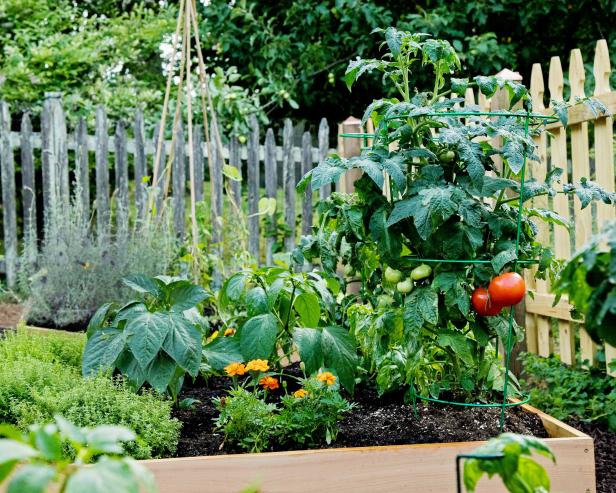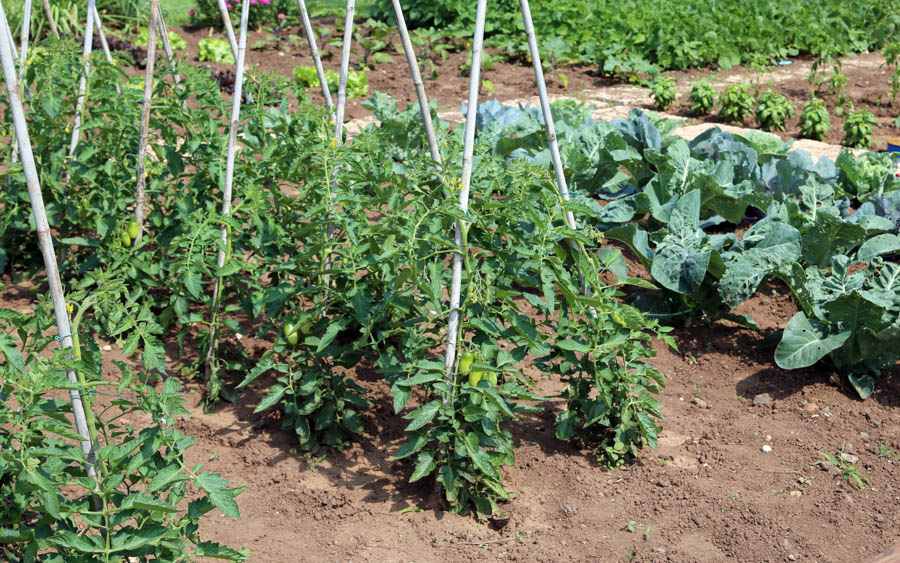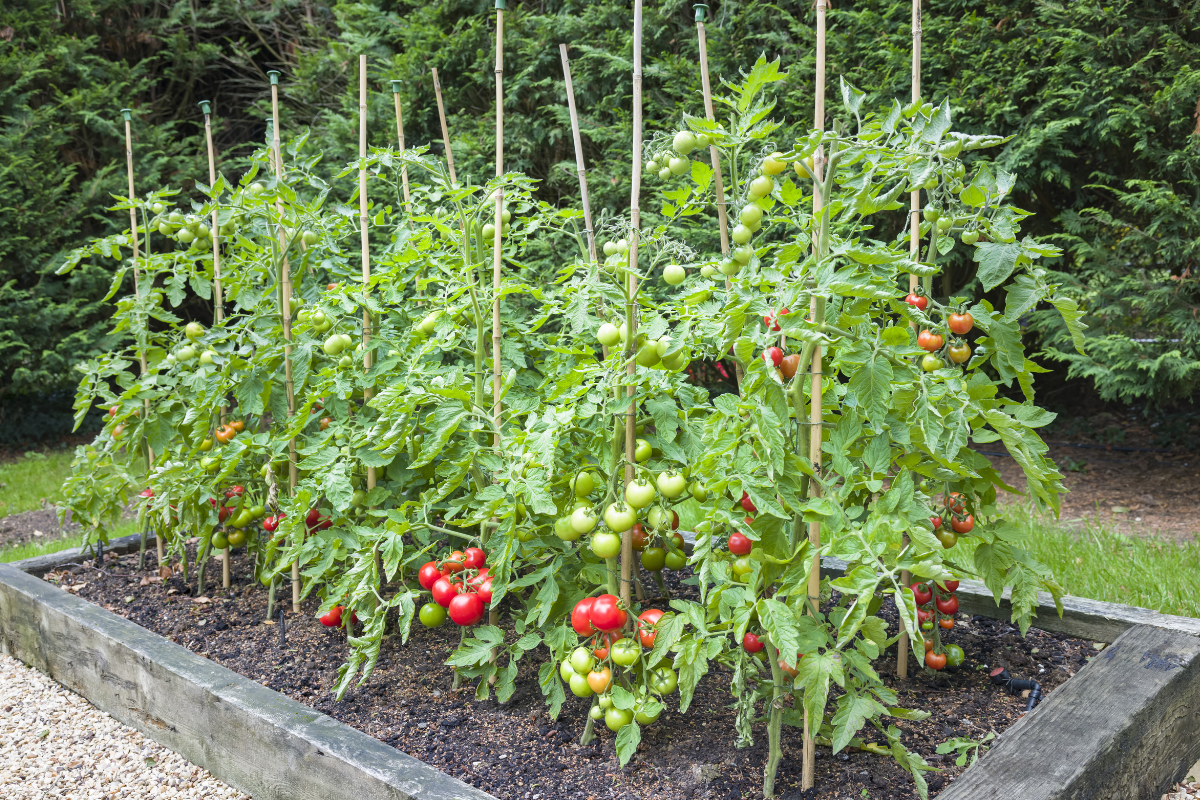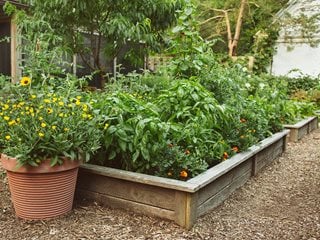Tomatoes And Onions: The Perfect Pair For A Healthy Garden
Tomatoes and Onions: The Perfect Pair for a Healthy Garden
Tomatoes and onions are two of the most popular vegetables grown in gardens around the world. They are both delicious and nutritious, and they can also help to improve the health of your garden.
In this blog post, we will explore the benefits of planting tomatoes and onions together. We will also provide some tips on how to grow these vegetables successfully.
Why Tomatoes and Onions Make a Good Pair
There are several reasons why tomatoes and onions make a good pair in the garden. First, they have different growing requirements. Tomatoes need full sun and well-drained soil, while onions can tolerate some shade and clay soil. This means that you can plant them in different areas of your garden to make the most of the available space.
Second, tomatoes and onions can help to deter pests and diseases. Tomatoes attract beneficial insects, such as ladybugs and lacewings, which help to control pests like aphids and whiteflies. Onions release sulfuric compounds that can repel nematodes, which are harmful pests that can attack tomatoes.
Third, tomatoes and onions can improve the flavor of each other. When cooked together, the flavors of tomatoes and onions blend together to create a delicious and savory dish.
How to Grow Tomatoes and Onions Together
If you decide to plant tomatoes and onions together, there are a few things you need to keep in mind. First, plant them at least 18 inches apart to give them enough room to grow. Second, fertilize them regularly with a balanced fertilizer. Third, water them deeply and regularly, especially during hot weather.
With proper care, tomatoes and onions will thrive in your garden and provide you with delicious and nutritious produce for months to come.
Here are some additional tips for growing tomatoes and onions together:
- Choose varieties of tomatoes and onions that are compatible with your climate.
- Prepare the soil well before planting. Tomatoes and onions need well-drained soil that is rich in organic matter.
- Mulch around the plants to help retain moisture and suppress weeds.
- Protect the plants from pests and diseases. Tomatoes are susceptible to a variety of pests and diseases, so it is important to take preventive measures. Onions are less susceptible to pests and diseases, but they can still be affected by some problems, such as root rot.
- Harvest the tomatoes and onions when they are ripe. Tomatoes are ripe when they are red, orange, or yellow. Onions are ripe when the skins are dry and papery.
Conclusion
Tomatoes and onions are a great combination for a healthy garden. They are both delicious and nutritious, and they can help to deter pests and diseases. If you are looking for two easy-to-grow vegetables that will add flavor and value to your garden, tomatoes and onions are a great choice.
Tomatoes and onions are two of the most popular vegetables to grow in the garden. They are also two of the best companion plants for each other. Onions' strong odor helps to deter pests from tomatoes, while tomatoes' taller growth habit provides shade for the shorter onions. In addition, both plants benefit from the same soil conditions and water requirements.
If you are looking to grow a healthy and productive tomato crop, consider planting onions nearby. For more information about tomatoes and onions companion planting, please visit Gardenia Inspiration.
FAQ of tomatoes and onions companion planting
- Can I plant tomatoes and onions together?
Yes, tomatoes and onions can be planted together. In fact, they are considered to be good companion plants. The strong odor of onions can help to deter pests that are attracted to tomatoes, such as aphids, tomato hornworms, and whiteflies. Onions can also help to improve the flavor of tomatoes.
- What are some other good companion plants for tomatoes?
In addition to onions, other good companion plants for tomatoes include:
- Basil: Basil helps to repel tomato hornworms and other pests. It also improves the flavor of tomatoes.
- Borage: Borage attracts beneficial insects, such as ladybugs and hoverflies, which help to control pests. It also helps to improve the flavor of tomatoes.
- Carrots: Carrots help to improve the drainage of the soil, which can help to prevent tomato diseases. They also help to attract beneficial insects.
- Garlic: Garlic helps to repel pests, such as aphids and tomato hornworms. It also helps to improve the flavor of tomatoes.
- Peppers: Peppers and tomatoes are both members of the nightshade family, so they grow well together. They also help to attract beneficial insects.
- What are some plants that I should avoid planting near tomatoes?
Some plants that you should avoid planting near tomatoes include:
- Brassicas: Brassicas, such as broccoli, cabbage, and cauliflower, can compete with tomatoes for nutrients. They can also attract pests and diseases.
- Corn: Corn and tomatoes attract the same pests and diseases, so planting them together can increase the risk of problems.
- Melons: Melons and tomatoes need different soil conditions, so planting them together can stress both plants.
- Potatoes: Potatoes and tomatoes can both be susceptible to the same diseases, such as late blight. Planting them together can increase the risk of spreading the disease.
- How far apart should I plant tomatoes and onions?
Tomatoes and onions should be planted about 18 inches apart. This will give them enough space to grow and thrive.
- How do I care for tomatoes and onions that are planted together?
Tomatoes and onions need full sun and well-drained soil. They should be watered regularly, especially during hot weather. Tomatoes and onions may need to be staked or supported as they grow. They should be fertilized regularly with a balanced fertilizer.
Image of tomatoes and onions companion planting
Here are 5 images of tomatoes and onions companion planting from Pinterest:
- Image 1: A row of tomato plants with onions planted in between. The onions are taller than the tomatoes and help to shade them from the hot sun.




- Image 2: A tomato plant with an onion plant growing at its base. The onion plant helps to repel pests from the tomato plant.
- Image 3: A pot of tomatoes with onions planted around the edge. The onions help to improve the drainage of the soil and prevent root rot.
- Image 4: A raised bed garden with tomatoes and onions planted in alternating rows. This helps to maximize the space in the garden and create a more visually appealing arrangement.
- Image 5: A small backyard garden with tomatoes and onions planted together. The tomatoes provide shade for the onions, while the onions help to repel pests from the tomatoes.
Post a Comment for "Tomatoes And Onions: The Perfect Pair For A Healthy Garden"